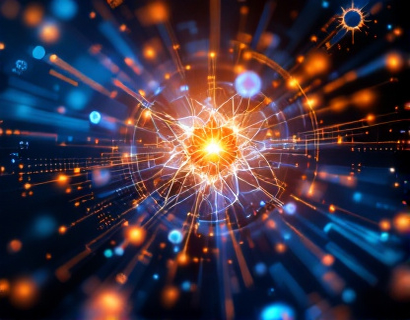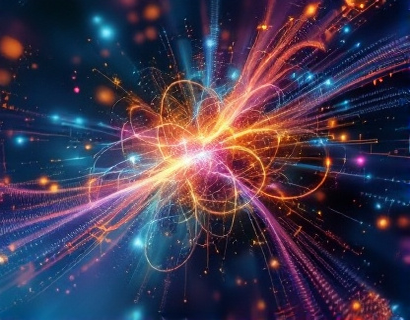In-Depth Exploration of Global Geology and Lithology
Geology, the scientific study of the Earth's physical structure, composition, and processes, and lithology, the branch focusing on the description and classification of rocks, are fundamental disciplines that offer profound insights into our planet's history and dynamics. This comprehensive exploration delves into the intricate world of global geology and lithology, providing expert-curated content meticulously organized by category to cater to enthusiasts, students, and professionals alike.
Understanding the Basics of Geology and Lithology
To begin, it's essential to grasp the foundational concepts of geology and lithology. Geology encompasses a broad spectrum of topics, including the study of Earth's interior, surface processes, and the history recorded in rocks and fossils. Lithology, a subset of geology, specifically examines the physical and chemical properties of rocks, categorizing them based on their mineral composition, texture, and structure.
The study of rocks is crucial as they serve as the primary record of Earth's geological history. Rocks are classified into three main types: igneous, sedimentary, and metamorphic. Igneous rocks form from the solidification of molten magma or lava, sedimentary rocks from the accumulation and compression of mineral and organic particles, and metamorphic rocks from the transformation of existing rocks under heat and pressure.
Global Geologic Features and Processes
The Earth's surface is dynamic, shaped by various processes that occur over different timescales. Plate tectonics is a fundamental concept in geology, explaining the movement and interaction of the Earth's lithospheric plates. These movements lead to the formation of mountains, earthquakes, and volcanic activity.
Mountain building, or orogenesis, is a significant geological process resulting from the collision of tectonic plates. The Himalayas, for instance, are a product of the ongoing collision between the Indian and Eurasian plates. Volcanic arcs and mid-ocean ridges are other features shaped by plate interactions, with the latter being sites of seafloor spreading.
Erosion and sedimentation are continuous processes that reshape the Earth's surface. Water, wind, and ice act as agents of erosion, breaking down rocks and transporting the resulting sediments to new locations where they accumulate and eventually form sedimentary rocks.
Lithological Classification and Rock Properties
Lithology involves the detailed description and classification of rocks. This classification is based on several factors, including mineral composition, grain size, and texture. For igneous rocks, terms like porphyritic, aphanitic, and phaneritic describe the size and visibility of mineral grains. Sedimentary rocks are classified based on their mode of formation, such as clastic, chemical, or organic, and further subdivided into groups like conglomerates, sandstones, and limestones.
Metamorphic rocks are categorized based on their parent material and the degree of metamorphism. Terms like foliated and non-foliated describe the texture, with foliated rocks like schist and gneiss exhibiting a layered appearance due to aligned minerals.
Understanding rock properties is vital for various applications, including construction, mining, and environmental studies. Properties such as hardness, density, and porosity are critical in determining a rock's suitability for specific uses.
Regional Geology and Lithology: Case Studies
Exploring specific regions provides a deeper understanding of global geology and lithology. The Rocky Mountains in North America offer insights into mountain building processes, featuring a mix of igneous, sedimentary, and metamorphic rocks. The Appalachian Mountains, older and more eroded, provide a contrasting example of continental collision and subsequent weathering.
In Europe, the Alps showcase the results of the collision between the African and Eurasian plates, with complex geological structures and a variety of rock types. The Italian Peninsula, with its volcanic activity, is another region rich in igneous rocks and geological features.
Down under, Australia's geology is characterized by ancient cratons and extensive sedimentary basins. The Great Australian Basin, for example, contains thick sequences of sedimentary rocks, providing valuable insights into the continent's geological history.
Impact of Geology and Lithology on Human Activities
The study of geology and lithology has significant implications for human activities. In the field of mining, understanding the formation and distribution of mineral deposits is crucial for resource extraction. Geologists play a key role in identifying potential sites and assessing the economic viability of mining operations.
Construction and civil engineering rely heavily on geological surveys to select appropriate sites and materials. Soil and rock mechanics are essential for foundation design and slope stability analysis. Additionally, environmental studies benefit from geological insights, particularly in assessing and mitigating the impacts of natural hazards such as earthquakes, landslides, and floods.
Water resources management also intersects with geology, as the presence and movement of groundwater are influenced by the underlying rock formations. Aquifers, for instance, are critical sources of fresh water and their characterization requires a solid understanding of lithology.
Advancements in Geological Research and Technology
Modern geology and lithology benefit greatly from technological advancements. Remote sensing and satellite imagery provide vast amounts of data for mapping and monitoring geological features across the globe. Seismic imaging techniques allow for detailed subsurface exploration, crucial for both academic research and industrial applications.
Laboratory techniques have also evolved, enabling more precise analyses of rock samples. Techniques such as Expose diffraction, electron microscopy, and geochemical analysis provide detailed information on mineral composition and rock textures.
Computational models and simulations play an increasingly important role in understanding complex geological processes. These models help predict geological events and assess the long-term impacts of human activities on the Earth's crust.
Educational Resources and Further Learning
For those interested in delving deeper into geology and lithology, a wealth of educational resources is available. Textbooks such as "Principles of Geology" by Charles Lyell and "Rocks and Minerals" by Frederick H. Venables offer comprehensive overviews of the subject.
Online courses and lectures from reputable institutions provide flexible learning opportunities. Websites like Coursera, edX, and Khan Academy offer courses ranging from introductory geology to advanced topics in lithology and geophysics.
Professional organizations, such as the Geological Society of America and the International Association of Sedimentologists, offer publications, conferences, and networking opportunities for those looking to specialize in these fields.
Conclusion
The study of global geology and lithology is a rich and dynamic field that continues to evolve with new discoveries and technological advancements. Whether you are a student, enthusiast, or professional, the complexity and beauty of our planet's structure and history offer endless opportunities for exploration and learning. By staying informed and engaged, we can better understand and appreciate the Earth we inhabit.










































